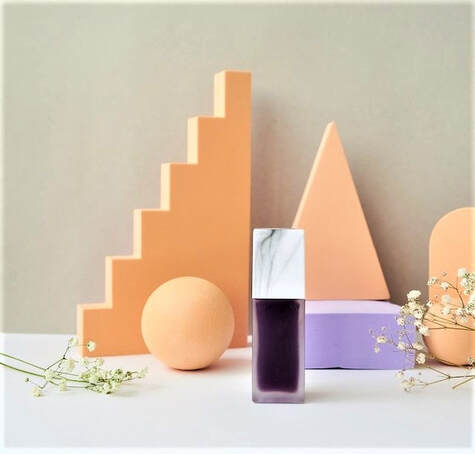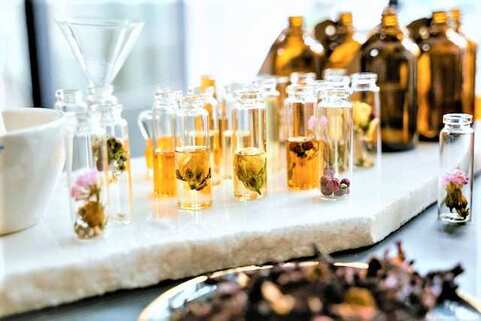Do you like to wear perfumes? Many workplaces don’t allow employees to do it. This policy aims to protect people who have allergies to chemical ingredients in perfumes. Some people react with non-life-threatening conditions such as nausea, contact dermatitis, or migraines. However, for others, it may cause serious health issues.
History of perfumes
Fragrances were created for pleasing scents or to mask unpleasant odors. They can be natural such as essential oils or synthetic.
The Egyptians and Mesopotamian have been the first who discovered the potential of fragrance made from essential oils and began perfume making. They created and enjoyed numerous aromatic blends by distilling natural ingredients with oils. Perfume receipts have been written in Egyptian temples and on a clay tablet in Mesopotamia.
The fragrance was used for religious ceremonies, medicine, and for demonstration of political status, wealth, and power. Ancient Persian, Greeks, Arab, Indian, Chinese, and Romans incorporate perfumes into their culture, as well. The archaeologists discovered perfumes in Cyprus. They were over 4,000 years old.
The popularity of perfumes spread rapidly around the world. People found romantic potential and pleasure by wearing fragrances. The first commercial perfume production began in Paris in the 12th century.
The first alcohol-based perfume, called Hungary Water, was created in the 14th century. The ingredients include scented oils and alcohol. Hungarian Water was also used as medicine in the 17th century.
4711 Original Eau de Cologne is the oldest perfume still being made since 1799.
The Egyptians and Mesopotamian have been the first who discovered the potential of fragrance made from essential oils and began perfume making. They created and enjoyed numerous aromatic blends by distilling natural ingredients with oils. Perfume receipts have been written in Egyptian temples and on a clay tablet in Mesopotamia.
The fragrance was used for religious ceremonies, medicine, and for demonstration of political status, wealth, and power. Ancient Persian, Greeks, Arab, Indian, Chinese, and Romans incorporate perfumes into their culture, as well. The archaeologists discovered perfumes in Cyprus. They were over 4,000 years old.
The popularity of perfumes spread rapidly around the world. People found romantic potential and pleasure by wearing fragrances. The first commercial perfume production began in Paris in the 12th century.
The first alcohol-based perfume, called Hungary Water, was created in the 14th century. The ingredients include scented oils and alcohol. Hungarian Water was also used as medicine in the 17th century.
4711 Original Eau de Cologne is the oldest perfume still being made since 1799.
Modern perfumes
With the creation of synthetic ingredients in 19 century, modern perfumery was born. Nowadays, perfumes utilize a mixture of synthetic aroma compounds, solvents, fixatives that help prolong the longevity of the aroma in perfumes, and trace amounts of some natural essential oils. Commercial fragrances are created to last for long time.
Synthetic fragrances contain many toxic ingredients. The EPA (Environmental Protection Agency) tested synthetic perfumes in 1991 and found a list of toxic ingredients including acetone, benzaldehyde, benzyl acetate, benzyl alcohol, camphor, ethanol, ethyl acetate, limonene, linalool, methylene chloride, phthalates, stearates, and parabens.
By a self-regulatory fragrance industry system, the list of chemicals don’t have to be listed on the labels and can be displayed as “fragrance”.
FDA regulation made it legal to keep fragrance ingredients undisclosed in order to protect a producer trade formula. Think twice about using commercial fragrance. They are not only affect vulnerable people, but also you are exposed to chemicals that may increase a risk of health problems. Try to avoid toxins in perfumes.
Check www.ewg.org/skindeep website for the useful information on cosmetic products. The Environmental Working Group (EWG) database is based on strict scientific standards for transparency and health, gives you practical solutions for protection from everyday exposure to chemicals in personal care products.
Synthetic chemicals often disrupt the body’s homeostasis. Prolonged use of synthetic fragrances can build up chemicals in the body’s tissues over time and have harmful side effects.
Synthetic fragrances contain many toxic ingredients. The EPA (Environmental Protection Agency) tested synthetic perfumes in 1991 and found a list of toxic ingredients including acetone, benzaldehyde, benzyl acetate, benzyl alcohol, camphor, ethanol, ethyl acetate, limonene, linalool, methylene chloride, phthalates, stearates, and parabens.
By a self-regulatory fragrance industry system, the list of chemicals don’t have to be listed on the labels and can be displayed as “fragrance”.
FDA regulation made it legal to keep fragrance ingredients undisclosed in order to protect a producer trade formula. Think twice about using commercial fragrance. They are not only affect vulnerable people, but also you are exposed to chemicals that may increase a risk of health problems. Try to avoid toxins in perfumes.
Check www.ewg.org/skindeep website for the useful information on cosmetic products. The Environmental Working Group (EWG) database is based on strict scientific standards for transparency and health, gives you practical solutions for protection from everyday exposure to chemicals in personal care products.
Synthetic chemicals often disrupt the body’s homeostasis. Prolonged use of synthetic fragrances can build up chemicals in the body’s tissues over time and have harmful side effects.
Essential oils for natural perfumes
What is the best solution to eliminate harmful chemicals if you adopt a healthy lifestyle? Consider natural essential oils as a better option. They do not disturb the body's natural balance and homeostasis. Essential oils carry the characteristic aroma of plants they are produced from.
Natural perfumes are the perfect way to decrease the number of chemicals that go into the body. Also, there are some beneficial therapeutic effects from essential oils you may experience with homemade perfumes. It is possible to create natural perfumes using single essential oils or blends.
Which oils to include in DYI perfumes will depend on your preferences. A list of most common essential oils for natural fragrance includes rose, jasmine, lavender, lemon, lemongrass, bergamot, vanilla, sandalwood, melisa, pine, peppermint, spearmint, rosewood, and many others. It is possible to create various aromatic blends for personal use. It depends on what aroma you desire to get.
Natural perfumes are the perfect way to decrease the number of chemicals that go into the body. Also, there are some beneficial therapeutic effects from essential oils you may experience with homemade perfumes. It is possible to create natural perfumes using single essential oils or blends.
Which oils to include in DYI perfumes will depend on your preferences. A list of most common essential oils for natural fragrance includes rose, jasmine, lavender, lemon, lemongrass, bergamot, vanilla, sandalwood, melisa, pine, peppermint, spearmint, rosewood, and many others. It is possible to create various aromatic blends for personal use. It depends on what aroma you desire to get.
Helpful tips for making your own perfumes
1. Essential oils are safer than chemicals in commercial perfumes. However, keep in mind that people react to essential oil differently. Use essential oil safely.
2. Essential oil should not be used directly on the skin. Always dilute it in carrier oil.
3. Before using essential oils for the preparation different blends, learn about their properties and recommended dilutions.
4. Do a skin test before applying essential oil topically. Place a small amount of diluted essential oil on the skin and wait 24 hours to see if you have any reaction.
5. Buy only high-quality pure essential oils that are free of dilutions. The negative health reactions are due to synthetic chemicals contained in essential oils.
6. Wear a single essential oil as perfume first. So you can find out your preferred aroma to wear for a long time.
The process is creative, experimental, and magical. There is possibility to recreate fragrance of favored brands, add your own fantasy note, or make unique aroma. DIY perfumes may increase your well-being and health. With homemade perfume you can express your personal style and taste.
2. Essential oil should not be used directly on the skin. Always dilute it in carrier oil.
3. Before using essential oils for the preparation different blends, learn about their properties and recommended dilutions.
4. Do a skin test before applying essential oil topically. Place a small amount of diluted essential oil on the skin and wait 24 hours to see if you have any reaction.
5. Buy only high-quality pure essential oils that are free of dilutions. The negative health reactions are due to synthetic chemicals contained in essential oils.
6. Wear a single essential oil as perfume first. So you can find out your preferred aroma to wear for a long time.
The process is creative, experimental, and magical. There is possibility to recreate fragrance of favored brands, add your own fantasy note, or make unique aroma. DIY perfumes may increase your well-being and health. With homemade perfume you can express your personal style and taste.






